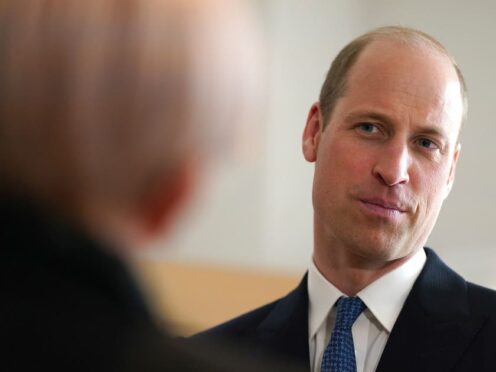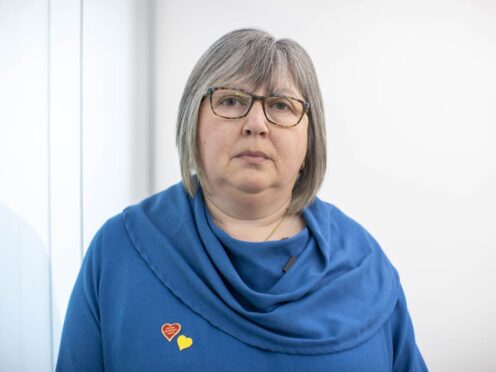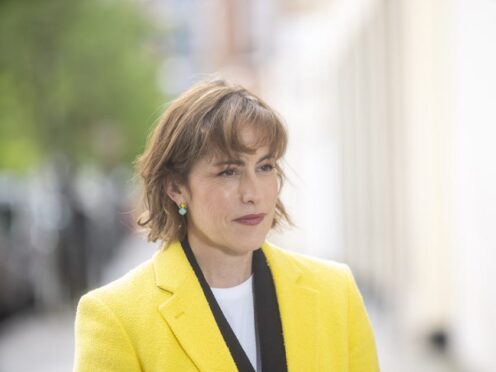Whether you are in oil and gas or renewables, an energy transition strategy is key to seeing your business through the ups and downs as society transitions to cleaner energy. But it’s also a great chance to ensure you make the most of the opportunity that’s out there right now in the energy sector.
-
Some Press and Journal online content is funded by outside parties. The revenue from this helps to sustain our independent news gathering. You will always know if you are reading paid-for material as it will be clearly labelled as “Partnership” on the site and on social media channels.
This can take two different forms.
“Presented by”
This means the content has been paid for and produced by the named advertiser.
“In partnership with”
This means the content has been paid for and approved by the named advertiser but written and edited by our own commercial content team.
It’s hard to avoid the headlines when it comes to energy at the moment, whether you’re considering the impacts of the current situation as a business or an individual.
“Geopolitical instability is driving commodity prices through the roof. This is going to have a knock on impact in all of our daily lives. From farming and food products through to fuelling your car and keeping the household lights on, we are going to see inflationary pricing,” says Adam Maitland, managing director of business advisory at finance advisory firm Hutcheon Mearns.
“There is also a growing awareness of country specific security of supply.”
The Russia/Ukraine conflict and associated economic fallout, along with rising energy bills, is highlighting just how delicate the supply and demand balance for energy is.
So what does this mean for businesses in oil and gas, as well as businesses in renewables?
Spurring on investment in energy infrastructure – investor appetite is there
As the energy sector transitions from one energy source to another, it should in theory spur additional investment in energy infrastructure – something Hutcheon Mearns’ is already noticing an appetite for amongst investors.
“It’s a massive opportunity for existing players in the energy industry, and for new entrants, from the supply chain right through to operators,” explains Naill Benzahia, corporate finance manager at Hutcheon Mearns.
That’s true for oil and gas just as much as renewables.
While emphasising that a transition to cleaner energy is of utmost importance, Naill acknowledges that we won’t get there overnight. He says: “For the foreseeable future, I see fossil fuels and renewables working side by side.
“We’re seeing a bit of a reality check to society with household energy bills going up and consumers feeling the impact of underinvestment in the oil and gas industry and a reliance on imported fuels. I expect investors will not be adverse to exposure to oil and gas within their portfolios because they recognise how important it is to the near and mid-term energy mix.
“Oil and gas alone is not the long term solution, but it’s going to be needed to help us transition – the key word there being transition – to renewables or a zero carbon future.”
Ensuring we can safely, efficiently and cleanly extract fossil fuels is a major part of this, while on the other end of the scale, the economics of renewables are quickly improving. Adam adds: “Arguably the costs are still significantly higher than existing energy sources. We believe this will continually converge over the coming period to provide energy parity, but the time frame is a little unknown.”
3 tips to keep in mind while navigating the energy transition
While there are opportunities, Naill acknowledges that investor attitude towards the energy sector does fluctuate and there will likely be highs and lows as the energy transition continues.
But an energy transition strategy can help. Here are three things to bear in mind.
1. Start by establishing clear goals for YOUR business
“You might have a family business and the aim is to set strong foundations and pass it to the next generation,” explains Naill.
“Or the flip side, your aim might be to secure private equity investment. You will need to prepare a growth strategy that will allow them to come in, deploy some capital and get a return in three to five years, in which case you need to build and position a business for an exit within that time frame.
“And likewise there are also more patient investors, like infrastructure funds, who want to invest in something that will give them steady cash flows for 20 or 30 years.
“Finally there are listed businesses, who will be seeking to create shareholder value and hedge against market volatility.” Where do you stand and where do you see your business in the future? Start here and always keep this in mind. Based on your business goals, Hutcheon Mearns can offer tailored advice to help make the most of the energy transition.
2. Think short, mid and long term

“The energy transition as a whole is going to be something that happens over time, it’s not just going to happen tomorrow, and there’s a global realisation that this is the reality,” says Naill.
Advisors like Hutcheon Mearns can help with strategic planning, from what you can and should do in the short term, to your options for the future (staying on as retained advisors throughout, if you wish).
Naill adds: “We do everything from helping with strategic planning all the way through to raising equity or debt funding and ultimately selling a business. If the client has an idea but doesn’t have the capital to develop or commercialise it, then we would sit with management and help them strategize how to achieve this.”
3. Think strategically during the highs and lows
Whether your business is in a good place or a worried place, have a plan. Naill says: “If you have a profitable oil and gas business, my advice wouldn’t be ‘stop doing that today and start looking at wind turbines’. My advice would be, ‘that’s fantastic, you have a profitable oil and gas business – but can we use your cash flow to diversify your business into the wider energy industry?’”
Why businesses of all sizes should have an energy transition strategy
Remember, there is opportunity for businesses of all sizes in both oil and gas and renewables. Naill emphasises: “The level of public and private investment into the energy sector is massive, which creates huge opportunity. And I’m not understating that.
“The biggest concern for the larger players in the industry is a potential shortage of skills and materials to action the massive infrastructure shift which is required to achieve a net zero carbon future, and that can only be a good thing for businesses.” With oil and gas fuelling the near term, and significant investment in the infrastructure for a net zero society, there is continued opportunity in the energy sector as a whole.
Engaging with trusted advisors can help you create an energy transition strategy to meet your specific business goals, while capitalising on the opportunity and investment that’s out there.
Naill ends: “Hutcheon Mearns as a business is well positioned to advise anyone across the whole energy spectrum, whether you are an early-stage or late-stage business.”
Create an energy transition strategy with help from the Hutcheon Mearns experts.











